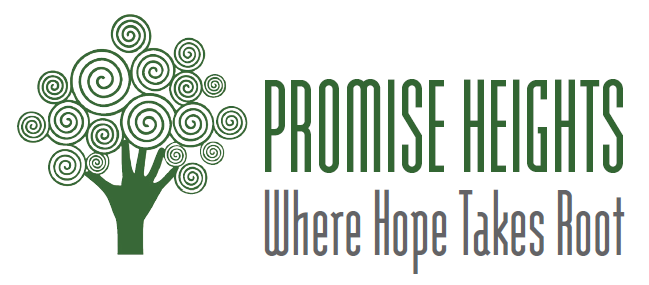The Lillie Carroll Jackson Museum Now Hosts Virtual Visitors & Welcomes Youth Involvement
“Baltimore is an unknown gem when it comes to the Civil Rights Movement. A lot of people don’t think of Baltimore when they think of the beginning of the Civil Rights Movement—or when they think of significant figures. Of course, everyone knows Frederick Douglass. Everyone knows Harriet Tubman....
We want students to know that their city is rich in history—history that is directly connected to them. Hopefully when they see the rich history, it will inspire them to be involved…boost their self-confidence , and transform how they see themselves in their neighborhoods.”
On the west side of Eutaw Place just south of West Lafayette Avenue, important transitions are happening in the modest row house that’s home to the Lillie Carroll Jackson Civil Rights Museum.
Now identified as 1320 Eutaw Place, Dr. Jackson’s former home was transformed into a museum by her daughter, Virginia in 1978.
For years this small museum has relied heavily on in-person visitation, yet in 2020/21, reinvented itself when the pandemic offered the challenge to create new virtual platforms, partner with important community organizations, and aim to achieve a central role inspiring Black youth of Baltimore to follow in Dr. Jackson’s footsteps. Now the museum is poised to become an important 21st Century center of history and culture.
The Row House at 1320 Eutaw Place is part of Morgan State University
A RICH HISTORY:
Built sometime around 1868 and originally identified as “402 Eutaw”, Dr. Jackson bought the building in 1953 with her daughter. Though serving as a museum for more than half a century, on occasion its 1800s-vintage doors were closed to the public.
The Museum’s website introduces the building’s history, including that in 1969,
“Jackson established a life estate that conveyed the property, upon her death, to Virginia Jackson Kiah, Lillie Jackson’s oldest daughter, for the purpose of developing the Lillie Carroll Jackson Civil Rights Museum, and upon Virginia’s death to be conveyed to Michael Bowen Mitchell for the same purpose. The property was then transferred to Morgan State University [MSU] in June of 1996 to continue the development of the Lillie Carroll Jackson Civil Rights Museum. It reopened in 2016 after rehabilitation, restoration, and reinvention.”
RECENT GROWTH:
Under the stewardship of MSU, the museum has consistently expanded its role as an educational institution, led by the Museum’s Director, Mr. Gabriel Tenabe, Curator, Dr. Iris Leigh Barnes, Ph.D.; and Security Guard/Museum Guide, Aaron Rivers.
By the time Alexis Ojeda-Brown joined its staff last autumn, the museum was closed to the public. She came at a crucial moment, bringing in-depth knowledge of the history that she references on a daily basis as an educator bringing a B.S. in History, with a concentration in American History and English Literature, the literature of the African Diaspora, and a certificate in African-American Studies.
Given the pandemic, Ojeda-Brown recently explained that,
“We don't have a lot of space—it’s a row house—so it's not like the Baltimore Museum of Industry (BMI) where they have a huge gallery where people can safely social distance. As part of Morgan State University, we’re keeping our doors closed as long as the University is also closed. We didn’t have much virtual content before the pandemic. Now we give virtual tours for groups and individuals.”
Museum Display: “Buy where you can work”
To assist with their new virtual projects, the museum was fortunate to connect and welcome four talented MSU students as part of the team, including a Graduate Museum Intern, an undergraduate Marketing and Communications Intern, and two Undergraduate Media and Content Creation Interns. Not only does the museum receive crucial support while these interns help build this new virtual platform: the internships also provide significant opportunities for their own professional growth.
The museum’s quick pivot to digital platforms has been made possible in part by an important grant from the Institute of Museum and Library Services (IMLS) to develop a Civil Rights Curriculum for Baltimore youth. Led by Dr. Barnes, the museum has partnered with the Baltimore City Public Schools (BCPS), Baltimore Heritage, and the Maryland Center for History and Culture (formerly known as the Maryland Historical Society,) and the museum expects to test the first round of the new curriculum this coming summer.
LOOKING TOWARDS THE FUTURE
Ojeda-Brown’s passion to share the history featured by this new curriculum is fully evident when she says:
“People like Lillie Carroll Jackson and her daughters—people like Clarence Mitchell Jr. and Dr. Carl J. Murphy were really on the forefront when it came to Civil Rights….But when it comes to the 1950s and 60s in the Civil Rights Movement, and even going further back to the 1930s and 40s, what they did in Baltimore had a significant national impact.
We want students to know that. We want students to know that their city is rich in history—history that is directly connected to them. Hopefully when they see that rich history, that will inspire them to become more involved, that will boost their self-confidence, and also how they see themselves in their neighborhoods.”
Another thing the museum plans to do is connect with student youth organizers, with youth on all levels, from middle school to college. A museum should be more than just an artifact storage facility. It should be a place where communities can gather to exchange ideas, especially because Civil Rights are so ingrained in our community! Lillie Carroll Jackson was such devoted organizer for her community, so it only makes sense that the museum will continue her legacy by being involved and by connecting with others.”




